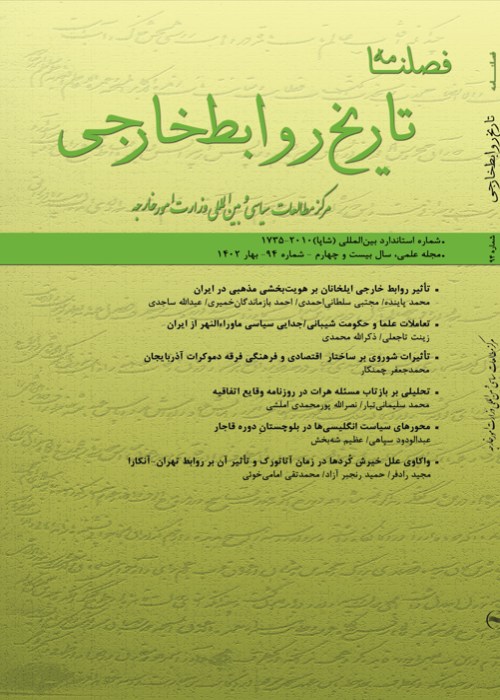The Arabic Hillah and Its Traces in Iranian Culture (7th to 9th centuries AH)
Author(s):
Abstract:
In the transitional period of 7th to 9th century the intellectual and cultural city of Hillah contributed to Iranian culture in three forms; scientific (through scholars and intellectuals journeys), spiritual (Hajj pilgrimage) and economic (commercial caravans), all of which were embodied in three dimensions of religion, mysticism and intellectual quests in Iranian culture. In terms of religion and science, Allameh Helli and his son Fakhr-al-Mohaqqeqin played a prominent role in transferring Hillah knowledge to Iran to the extent that their role was crucial in Iranians conversion from Sunni to Shia Islam. From a mystic and spiritual point of view, in addition to contributions from Seyyed ibn Tavous and Ibn Meysam Bohrani, Ibn Fahad Hilli and Seyyed Heydar Amoli, their role in bilateral relations were highly effective.
Keywords:
Language:
Persian
Published:
History of Foreign Relations, Volume:17 Issue: 67, 2016
Pages:
53 to 87
magiran.com/p1691278
دانلود و مطالعه متن این مقاله با یکی از روشهای زیر امکان پذیر است:
اشتراک شخصی
با عضویت و پرداخت آنلاین حق اشتراک یکساله به مبلغ 1,390,000ريال میتوانید 70 عنوان مطلب دانلود کنید!
اشتراک سازمانی
به کتابخانه دانشگاه یا محل کار خود پیشنهاد کنید تا اشتراک سازمانی این پایگاه را برای دسترسی نامحدود همه کاربران به متن مطالب تهیه نمایند!
توجه!
- حق عضویت دریافتی صرف حمایت از نشریات عضو و نگهداری، تکمیل و توسعه مگیران میشود.
- پرداخت حق اشتراک و دانلود مقالات اجازه بازنشر آن در سایر رسانههای چاپی و دیجیتال را به کاربر نمیدهد.
In order to view content subscription is required
Personal subscription
Subscribe magiran.com for 70 € euros via PayPal and download 70 articles during a year.
Organization subscription
Please contact us to subscribe your university or library for unlimited access!


